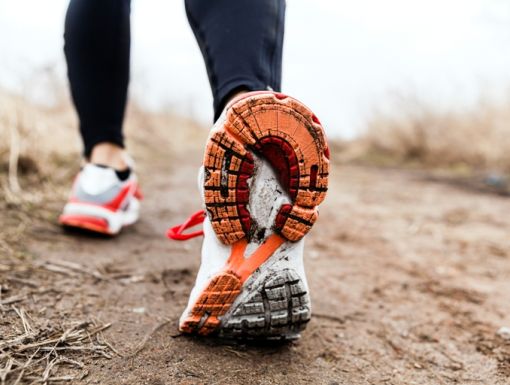
Bike Your Way to a Better Body
Besides being fun, and a responsible way to minimize your carbon footprint, riding a bicycle can be an excellent fitness activity. Because it puts much less stress on your joints, knees and hips than running or walking, cycling is good for cross-training. So while you’re out getting a good workout on your bike keep these tips in mind to get the most out of your ride and stay safe.
Size Up Your Bike
Consider for what kind of activities you want to use your bike, be it commuting, social riding, mountain biking or road racing, as this might affect the need for a step-through or step-over frame. Your bike should be sized according to your body proportions, as an ill-fitting bike could cause several injuries. A good fitting bike should not be uncomfortable. If you experience any numbness or tingling in your shoulders, arms or hands your body is telling you the bike fit is a little off, although padded gloves can reduce the pressure on your hands. An ache in your lower back is your body giving you a warning of things to come. Don't ignore it, it will only get worse. Consider changes of body position when riding, with resting and stretching off-bike and possibly an appointment with a bike fitter.
To choose a bike with the correct frame size, put a leg on either side of the top tube, stand with both feet flat on the ground and check the room between the top tube and your crotch. The recommended amount of room depends on the type of riding you will be doing — 1 inch to 2 inches for road riding and double that for off-road riding.
Seat height also is important. To make sure your seat is at the right level, sit comfortably on the saddle and fully extend your right leg with your right heel resting on the pedal in the 6 o'clock position. Sit squarely on the seat with your hands on the handlebars. If your seat is at the correct height, you'll have a slight bend at the knee (the knee should be bent at an angle of 25° to 30°). For the most comfort, the seat should be level or tilted slightly downward. If you cycle often, consider wearing padded cycling shorts to increase your comfort.
Use Your Gears
Most all-terrain bikes have 15 gears to 21 gears. To get a good workout, learn to use all of them, the International Bicycle Fund (IBF) says. In general, gear down when you're riding into the wind or uphill. Gear up when riding with the wind or downhill. The gears should be used to keep a steady pace whether going uphill or down, into the wind or with the wind at your back. Ideally, you should always ride in a gear that allows you to maintain your target heart rate — 50% to 70% of your maximum heart rate. Consider using a heart-rate monitor to get an exact measurement as you exercise.
Get in Bike Shape
Every time you ride, practice these principles to make sure you have a safe workout: don't start off intensely. Instead, gradually raise your heart rate by warming up for the first 5 minutes to 10 minutes of your ride by pedaling slowly and riding on flat ground. Otherwise, you will probably feel sore and increase your risk of a chronic injury like tendonitis. At the end of your ride, cool down for 5 minutes by gearing down and pedaling more slowly.
Cycle Sensibly
Our local bike advocacy group, Bike Easy, offers Smart Cycling classes, which includes basic bicycle maintenance classes using League Cycling Instructors. They recommend the following:
- Follow the law. You have the same right and duties as drivers. Obey traffic signals and stop signs. Ride with traffic; use the rightmost lane headed in the direction that you are going. Rules of the road can be found online at the Louisiana Bike Guide.
- Be predictable. Make your intentions clear to motorists and other road users. Ride in a straight line and don’t swerve between parked cards. Signal turns and check behind you well before turning or changing lanes.
- Be conspicuous. Ride where drivers can see you; wear bright cleaning. Use a front white light,a red rear light and reflectors at night or when visibility is poor. Make eye contact with drivers. Don’t ride on sidewalks.
- Think Ahead. Anticipate what drivers, pedestrians and other bicyclists will do next. Look out for debris, potholes and utility covers. Cross railroad tracks at right angles.
- Ride Ready. Check to see your tires have sufficient air, brakes are working, chains run smoothly and quick-release wheel levers are closed. Carry repair and emergency supplies appropriate for your ride. Keep a water bottle handy and take a sip every 15 minutes. Wear a helmet.
- Your bike helmet should be level on top of the head, about two finger-widths above the eyebrows. It should not rock back and forth or side to side. The strap should be buckled and snug under the chin.
- Don’t use a helmet that has been in a crash. A damaged helmet may not protect the head.


